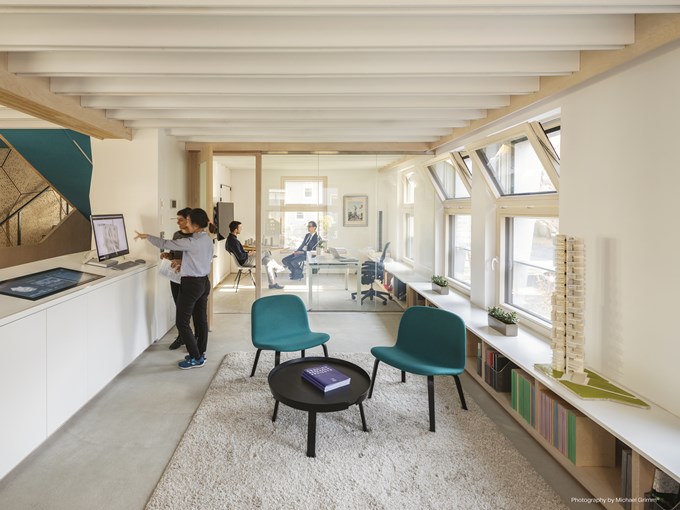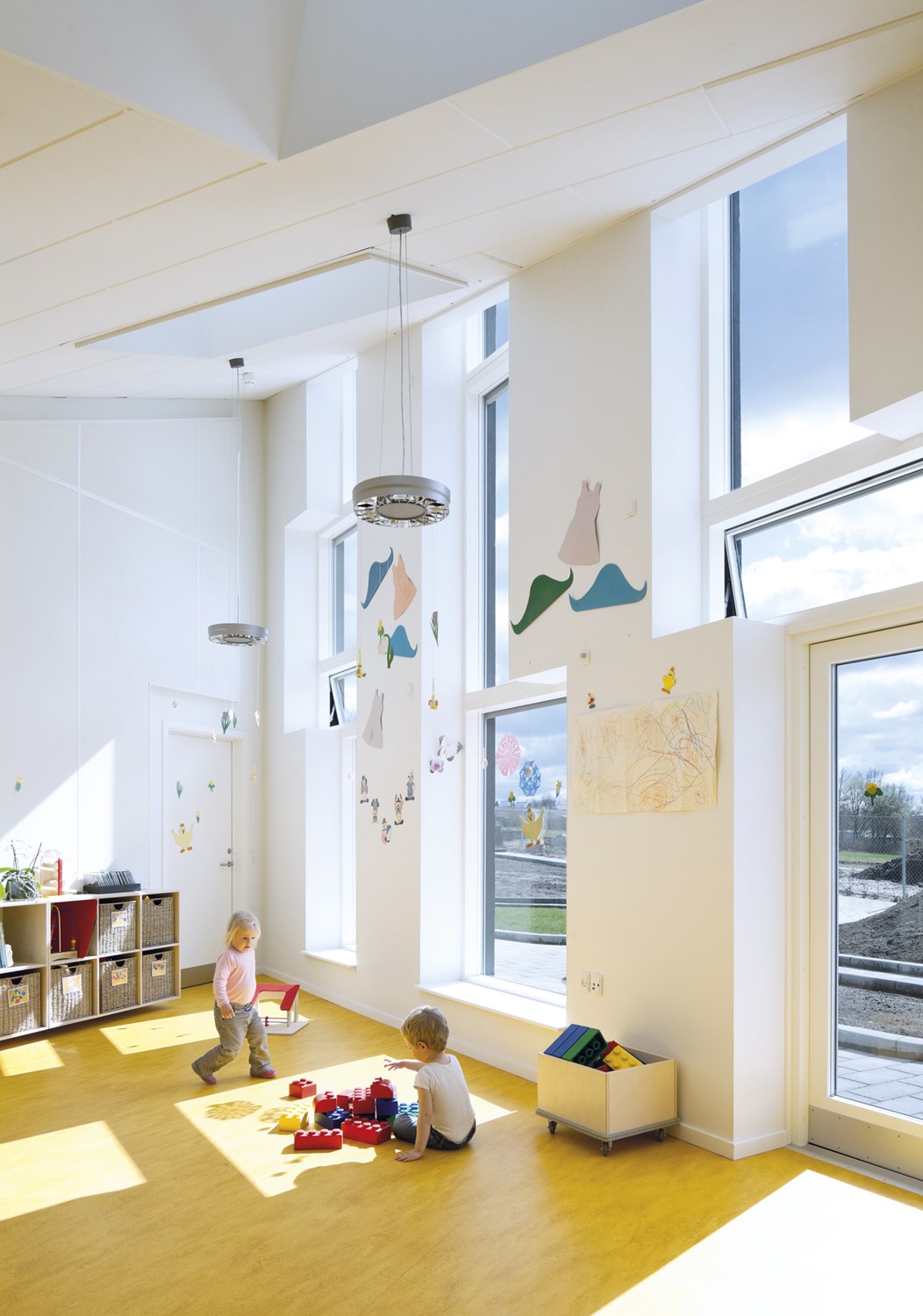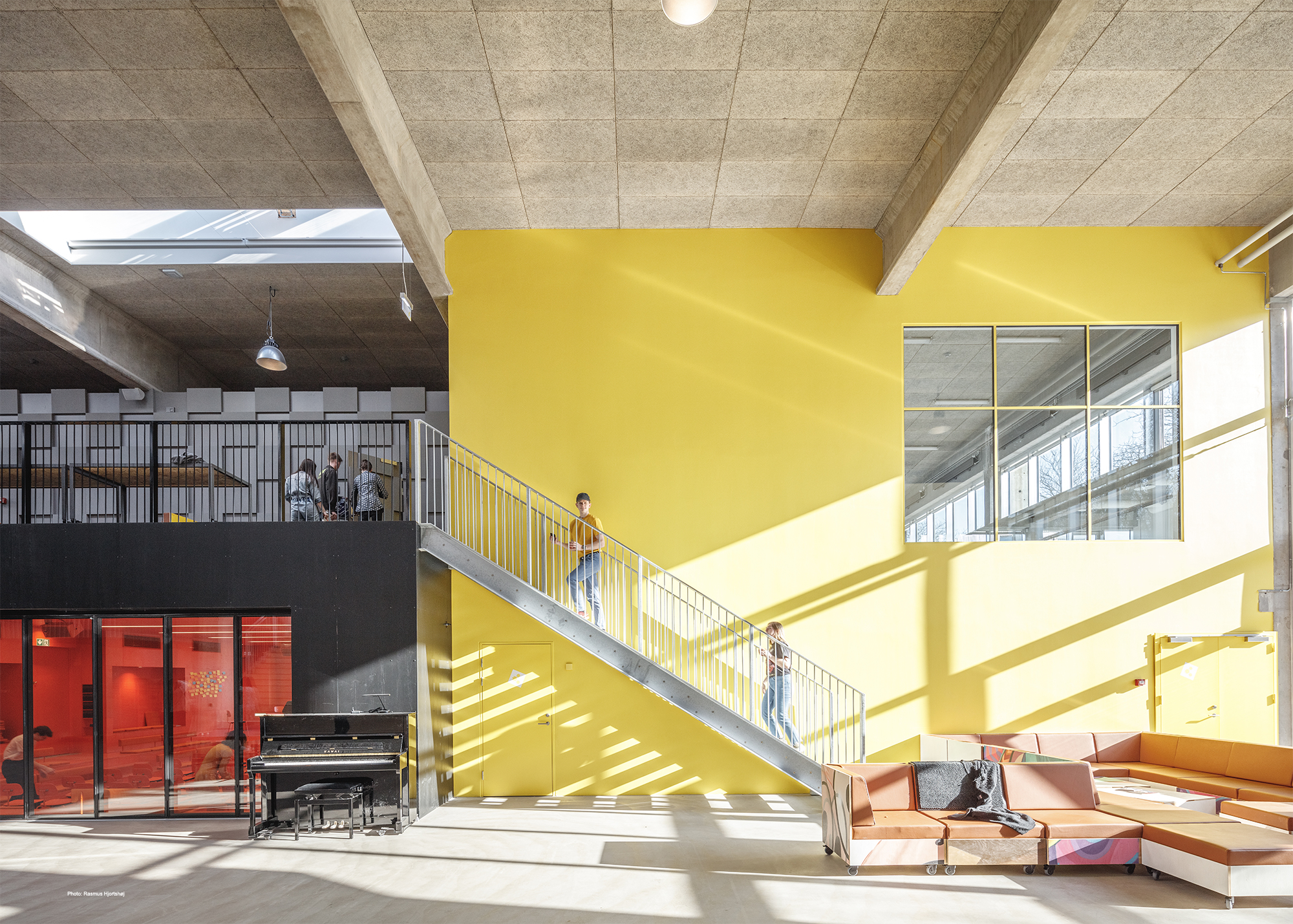Freshly circulated air and regular exposure to daylight play a crucial role in architectural design. Not only do they contribute to a healthy and comfortable environment, they also have a significant impact on our mood and overall wellbeing; making us feel healthier, happier, and more energised. In the northern hemisphere, where the winter months can bring about extended periods of darkness, the significance of these factors becomes even more important. Yet, according to experts, these elements are often neglected or misunderstood, and it’s only by combining the two that we can realise true ‘architectural harmony’. In fact, as well as improving sleep, studies on the topic have shown proper lighting (+23%) and better ventilation (+11%) can increase workplace productivity. So, what can we do to make spaces more comfortable and where should we look for inspiration?
Find out why fresh air and daylight are so important in architectural design
Contact our specialists to help turn your space into a health-focused environment that provides fresh, circulated air.
Better indoor air quality brings better performance
At WindowMaster, we’ve understood the benefits of these two principles for a long time, particularly relating to ventilation in buildings. Fresh air in constant circulation is essential to our overall physical and emotional health; however, it isn’t always given the attention it deserves. When fresh air enters an enclosed space, it displaces stagnant air, reducing the concentration of pollutants and allergens. This can have a beneficial effect on our health, especially for those with respiratory issues or allergies. What’s more, natural ventilation in buildings has a positive impact on our temperament. Studies have shown that streams of oxygenated air can improve cognitive function and reduce stress, an area inextricably linked to workplace performance and morale. This is particularly important in the northern hemisphere, where long winter months can bring about feelings of seasonal affective disorder (SAD).

Why we need to employ passive cooling
Architect, Carlo Volf, a man who has spent his career understanding how ‘natural elements’ in architecture can enhance people’s health and welfare, believes the past holds the answers to how we cool spaces.
“The cooling requirements of buildings continue to increase worldwide. The climate is getting warmer, building envelopes are becoming tighter and we need to cool more and more. This is often done mechanically, which means that more climate-damaging CO2 is emitted. In my view, this is a vicious circle that we can only counter with intelligent, low-tech solutions”.
On night-time cooling, Carlo Volf says: “This is the only time of day when the temperature in rooms can be reduced without using energy - by harnessing the low night-time temperatures with the help of passive cooling. This can significantly reduce the use of energy-intensive mechanical cooling systems.”
He’s not wrong. Unfortunately, many buildings still rely on energy-intensive heating and cooling systems, recycling air rather than replacing it. For example, high maintenance, carbon-heavy mechanical air conditioning units, which fail to harness nature’s ability to cool rooms.
However, it no longer needs to be the case. Adopting innovative methods to ancient approaches, such as natural ventilation, are low-intervention ways of keeping buildings cool. By using smart technology and sensor-loaded actuators, these systems can be controlled to exploit outdoor airflows to remove and retain heat on demand, any time of day or night.
Look backward to move forward: How daylight plays a part
Window design also needs a ‘rethink’. Carlo Volf believes we should learn from the past and use translucent glass. Once popular in hospitals, this type of glazing reduced the need for window coverings which harbour dust and germs, immediately reducing risk of poor indoor air quality. It also regulates light intake by reducing glare. He doesn’t understand why specifiers turned their backs from this idea. As he elaborates, “We treat daylight completely differently and neglect its potential: we are increasingly working with multi-glazed windows to reduce the amount of sunlight and the associated room heating. The negative impact on our health should not be underestimated.” To counter this, Carlo Volf is now exploring how translucent, double-glazed windows can be used to deliver health-boosting properties.


How do I achieve a healthy building?
This just scratches the surface of what can be done to improve wellbeing. If you’re interested in promoting healthier environments, it may be easier to make a change than you might think. From WindowMaster’s perspective, the best place to start is addressing your ventilation strategy and see how you can remove your reliance on mechanically recycled air.
Here, understanding what natural and mixed-mode ventilation in buildings can achieve, and how they can benefit your building, is vital.
Natural ventilation uses natural forces, including wind and temperature differences to passively cool or heat buildings. This involves opening and closing windows to allow fresh air to enter a room. With a simplistic but effective design, natural ventilation in buildings can provide comfortable indoor environments while reducing reliance on mechanical cooling systems, which can reduce emissions and lead to energy savings.
Mixed-mode ventilation combines the benefits of both natural and mechanical systems. Fresh air is drawn in through natural ventilation, such as windows or vents, but uses mechanical means to enhance airflow as well minimising humidity and temperature fluctuations. It’s a great choice for scenarios where natural ventilation alone might not be sufficient (e.g. enclosed spaces). By leveraging the benefits of both, natural ventilation in buildings can greatly improve indoor air quality.
Discover all the benefits of natural and mixed-mode ventilation in buildings
Much like Carlo Volf, WindowMaster advocates for natural solutions. It’s an ethos at the heart of what we do, and much like ancient civilisations before us, we recognise the benefits of natural ventilation. However, alongside pioneering systems and products, we take this knowledge and apply it to 21st-century buildings.
Get the full background on natural ventilation for 21st-century buildings

“We know that supplying the brain with fresh air, even for a short time, has a positive effect on brain structure and mood. For us and our next generations to thrive, we must begin to consider fresh air and daylight through a holistic lens. At WindowMaster, we pride ourselves on our market-leading innovations that take the principles of the past but deliver them into unique, effective solutions that can transform the health and happiness of a space.”

Jannick K. Roth
Head of Building Performance Engineering

